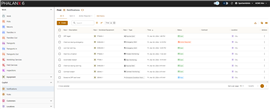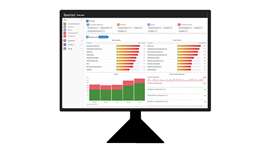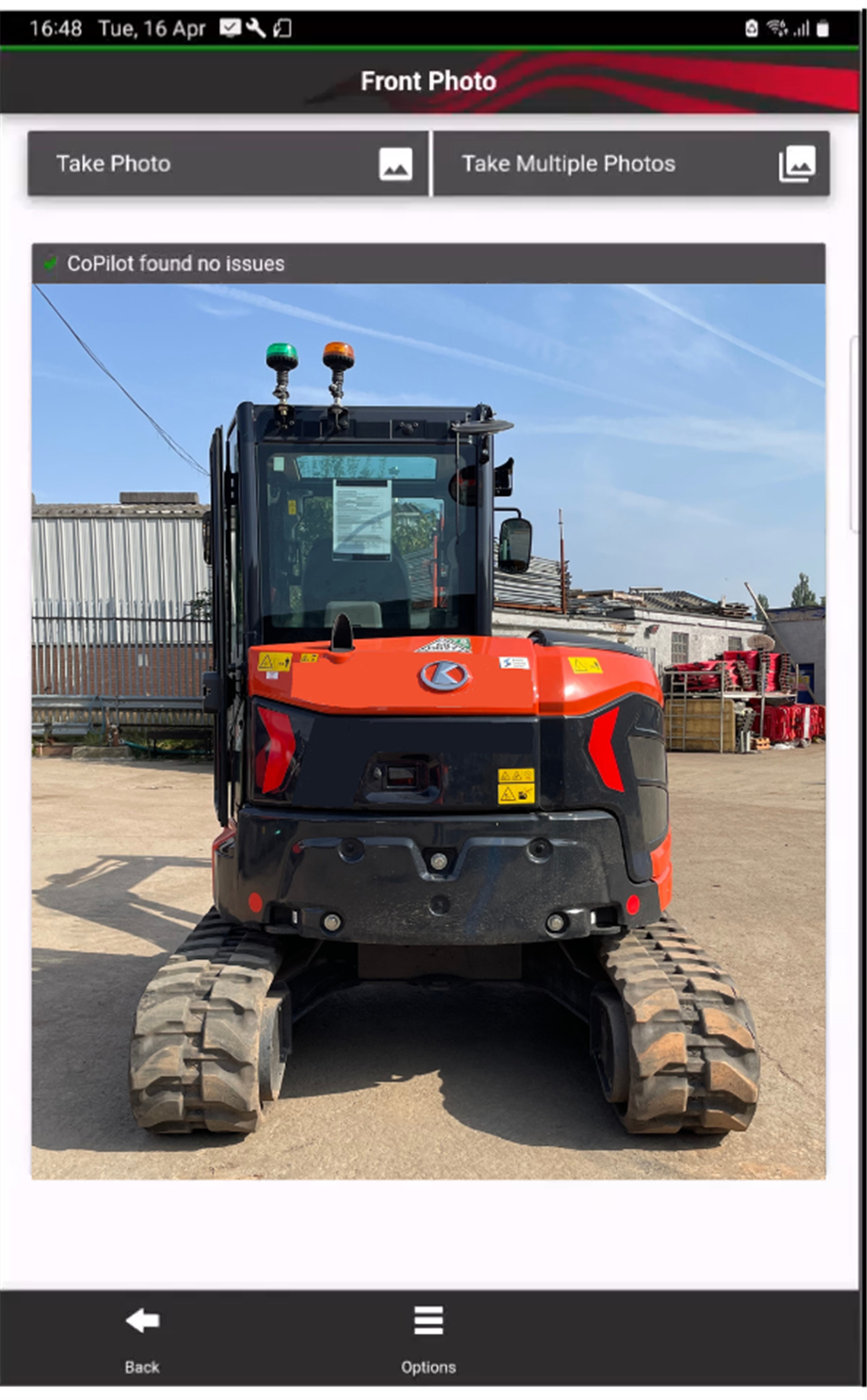Spartan launches its first AI ‘co-pilots’ for rental
21 August 2024
UK technology firm Spartan Solutions is pioneering the use of artificial intelligence (AI) in the rental sector. Murray Pollok met COO John Glen and CEO Jim Green to find out more.
Not every company is new to the artificial intelligence (AI) game. UK-based technology business Spartan Solutions has been working with AI specialists at its local university for more than five years and has already supplied AI-based tools to clients.
The company’s groundwork in AI was done in creating a predictive maintenance solution, PROPHES, for the offshore oil and gas sector. That work, which drew on a collaboration with scientists at the University of Strathclyde, is now bearing fruit in its equipment rental solutions, where it is launching the first AI-based ‘co-pilots’ to work alongside its PHALANX range of Apps and tools for rental logistics and servicing.
 John Glen, COO and co-founder of Spartan Solutions in the UK.
John Glen, COO and co-founder of Spartan Solutions in the UK.
The first three co-pilots – which can be embedded within Spartan’s Apps - will help rental companies manage the quality of images taken of equipment, provide a predictive maintenance tool, and improve text communications in its workshop and fleet management functions.
Key to making this happen, says Spartan’s COO John Glen, is the development of freely available AI ‘transformers’ – that’s the ‘T in GPT (Generative Pre-trained Transformers) – which are machine learning routines that can be used for a wide variety of tasks, including to analyse and generate text, create Q&A bots, assess images, and more.
“Transformers is the important word”, he says, speaking at the company’s head office in Glasgow, located in a technology hub close to the university, “That was the white paper that the Google team created seven years ago and has driven this whole AI market.”
The first of the co-pilots will help control the quality of the photos of equipment that workshop staff and drivers take before and after deliveries.
“The first thing we did is build an AI engine that checks the quality of the photograph at the point of capture to make sure you’re taking the right photograph”, he says.
“We’ve programmed the co-pilot to say, is this an image of construction equipment? It can effectively reject a photo at the point of capture and say, I’m not going to let you use that picture.”
 The PHALANX mobile CoPilot validating a well-taken image of rental equipment. The green tick means that the Co-pilot found no issues. (Image: Spartan Solutions.)
The PHALANX mobile CoPilot validating a well-taken image of rental equipment. The green tick means that the Co-pilot found no issues. (Image: Spartan Solutions.)
The system will alert users if a photo is not of sufficient quality, the aim being to prevent disputes around damage.
“It’s a massive issue”, says Glen, “If you can’t provide the evidence in a timely manner, the probability of an enterprise getting the money back gets close to zero, because they cannot provide any evidence. You’re going to lose revenue because your clients will question it.”
Checking text
Another co-pilot will help companies analyse text and data manually entered and help make sure that materials are professional and suitable for wider display.
”A lot of the users are not employed by rental companies for their language skills”, says Glen, “and some may be dyslexic…We can run a quality check on the raw data flow through the mobile device, and if it’s got a bad language score or the grammar falls below a certain standard, then we’ll flag it to someone in the back office.”
Glen emphasizes that the human element will be retained, with staff asked whether they want to accept the co-pilot’s suggested change; “AI doesn’t fix it automatically - it keeps a human in the loop.”
He says some clients want to put their inspection certificates online, but they don’t trust the quality of the photographs and are concerned about the text; “If we can use AI to significantly improve both, then they can start posting things on the web with much more comfort”.
The third co-pilot is for predictive maintenance and is interesting because it uses an older version of AI based not on algorithms and machine learning, but on expert rules.
“AI is a fairly large universe”, says Glen, “Machine learning is a subset of AI, but there’s another subset called expert rules. Expert rules are basically forward-chain propagation - what you can do is you can chain ‘if then else’ statements together so that you take the input, you run through these various chains of logic gates, and the output is either do nothing or do something.”
He gives the example of a pump rental application and chemical dozing of a water supply: if you know the client’s requirements, the dozing required and have telematics monitoring in place, you can set a chain of rules and then create messaging to personnel if certain conditions occur.
“We set up a rule that says, okay, monitor the telematics stream and when the chemical output meter gets within 5% of the licensed amount, then create an emergency predictive maintenance event that basically means that we have to either send an engineer out to turn off or turn down the pump, or we contact the client.”
Glen says; “We’ve got a whole host of expert rules that we can run on telematics to automate or semi-automate a range of different business events that rental companies and the clients are interested in.”
Surveillance revenue
That also means rental companies can charge an additional fee for what Glen calls a “surveillance service. You get the rental revenue and you get surveillance revenue on top of it.”
There is another benefit of the expert rules approach to AI, which is explainability - removing the opaque, ‘black box’ aspect that surrounds the output from complex algorithms.
“We created a machine learning system for an oil a gas client that was very good at predicting when a dry gas seal would fail on an offshore turbine. If that fails the turbine is down and it’s a million pounds plus a day penalty”, he explains.
“We showed it to the engineers and they said, great, but why did the machine learning algorithm predict that? And the honest answer is, I can’t tell you because it’s a complex mathematical model. They say we can’t use that, because if we can’t explain to managers why we want to shut the turbine down, they are going to say no.”
 Spartan’s Equipment Telematics CoPilot, showing the view for hire controllers. The system highlights emerging events, such as chemical dosing emergencies and excessive diesel engine soot. (Image: Spartan Solutions)
Spartan’s Equipment Telematics CoPilot, showing the view for hire controllers. The system highlights emerging events, such as chemical dosing emergencies and excessive diesel engine soot. (Image: Spartan Solutions)
Applying the same logic to rental, Spartan’s team question workshop managers and engineers about the most likely causes of technical failures on particular items of equipment, and then, applying telematics data, create rules that can alert the company if something is likely to go wrong – it may be an alert based on engine temperature or some other technical characteristic.
“We’ll run the expert rules across a five-year maintenance history and we’ll sanity check that it is doing what you would expect it to do. And once they’re happy with it, we’ll deploy that live.”
Of course, one important consideration in rental, and in particular for delivery drivers or service staff, is the ability for these systems to work when there is no data or phone connection.
“What our team did is we can then take any AI transformer, put it fully offline on a mobile device and use it to run business processes”, says Glen.
“It has to work disconnected in rental because you’re not going to have access to a server or the cloud - you’re in a field, your connection is marginal. No matter where you are in Britain, you can’t guarantee a connection. There’s no getting around that.”
More to come
The three initial co-pilots – which will be priced at comparable levels to Microsoft’s co-pilots – will be followed by others, with Spartan investigating as many as 30 use cases.
“Some of these might be culled”, says Glen, “To get 50% of the highest value cases it will take 18 to 24 months.”
 The PHALANX 6 Hire Control Portal shows the status of work (picks, deliveries, returns, services, etc) as it flows through the rental lifecycle. (Image: Spartan Solutions)
The PHALANX 6 Hire Control Portal shows the status of work (picks, deliveries, returns, services, etc) as it flows through the rental lifecycle. (Image: Spartan Solutions)
One example he gives is of a mobile device recording engine noise and highlighting likely problems, with the co-pilot trained on multiple engines. Another co-pilot for route planning, incorporating sophisticated mapping tools, is also on the cards. (The company already offers a route planning solution, but not AI-based.)
Will it be transformative in the rental industry?
“That’s hard to answer”, says Glen, “You have to bring users with you. It’s about managing change and introducing it safely and responsibly. I don’t see it as job replacement, it’s about getting more work done with the same workforce.”
Spartan’s focus is on the operational aspects of equipment rental, and AI tools will allow it to build on its existing products. These include PHALANX 6, which allows a rental company to digitise a lot of its workshop and operational activities.
“Every time a piece of equipment moves through the closed loop cycle of a rental company, we’ve got a business process an app, a workflow, to manage that”, says Glen. PHALANX can easily be integrated with more general rental management systems, including ERP systems.
 Jim Green, co-founder and CEO of Spartan Solutions.
Jim Green, co-founder and CEO of Spartan Solutions.
For Jim Green, the IT industry veteran who is Spartan’s co-founder and CEO, the products it is offering provide managers with much-needed visibility on their operations, which is crucial when you are trying to improve efficiency.
“The opportunity is what can’t be seen”, he says, “There are a lot of hidden costs that can be removed.” He thinks AI will be “the cherry on the top” of this shift to digital technology for rental.
The company has a track record working for major rental businesses, with clients including Aggreko, GAP Group and Ramirent, as well as contractor Balfour Beatty, but it sees particular opportunity in the SME sector.
“The mid-market size sector is rife for digitalization and process improvement”, says Glen, “We’ll still take the bigger companies on, but there are only so many of them.”
The company’s success has seen it field multiple approaches from other IT companies, but it has resisted all offers; “It’s just not been right, and we’ve been busy doing other things,” says Jim Green.
For now, AI is one of these other things. “This will go at warp speed 10”, says Green, “and people who are ahead will take business.”
STAY CONNECTED



Receive the information you need when you need it through our world-leading magazines, newsletters and daily briefings.
CONNECT WITH THE TEAM










